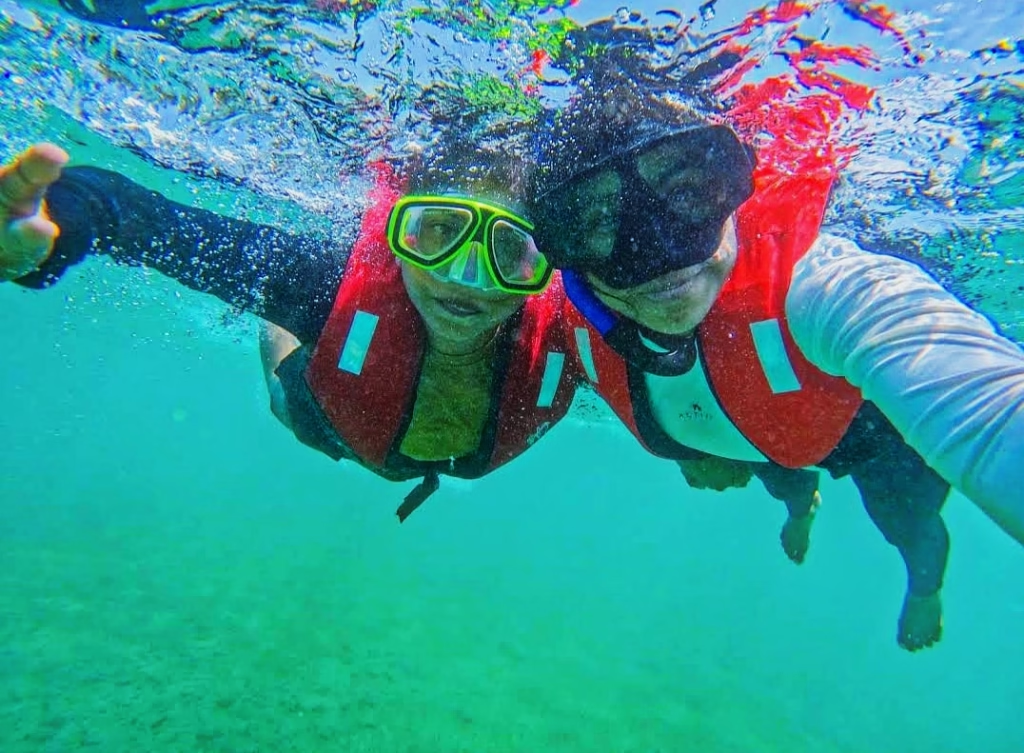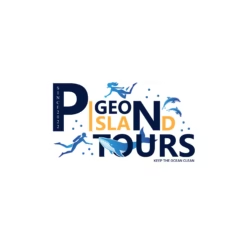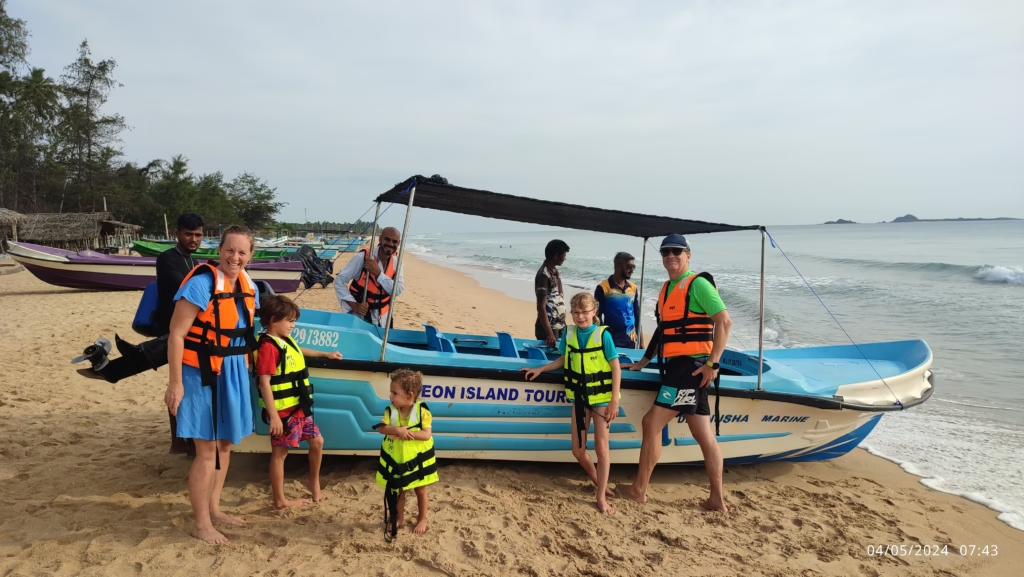Pigeon Island SAARC Rates – 2026 Complete Price List
Pigeon Island SAARC Rates – Planning a trip to Pigeon Island? This guide provides detailed SAARC Rates for 2026, including all necessary information for travelers from SAARC countries. Whether you are from India, Pakistan, Bangladesh, Nepal, Bhutan, Maldives, or Sri Lanka, this page will help you plan a stress-free visit to one of Sri Lanka’s most beautiful marine parks.
Pigeon Island SAARC Rates Overview
Pigeon Island SAARC Rates – Visitors holding SAARC passports can benefit from special rates to explore Pigeon Island. Make sure your passport is valid and follow the necessary application requirements to secure your entry. The rates vary depending on nationality, age, and additional activities such as snorkeling or guided tours.
SAARC Countries Eligible for Special Rates
- India
- Pakistan
- Bangladesh
- Nepal
- Bhutan
- Maldives
- Sri Lanka
Pigeon Island SAARC Rates How to Apply for Pigeon Island Entry – SAARC Passport Holders
Pigeon Island SAARC Rates All SAARC passport holders must apply for entry tickets in advance. Make sure to carry your original passport and a copy. Entry tickets can be booked online or through authorized agents. If you are planning a snorkeling or diving experience, additional equipment fees may apply.
Step-by-Step Application Process – Pigeon Island SAARC Rates
- Check your passport validity (minimum 6 months remaining).
- Fill out the online entry form via authorized portal.
- Select your date, preferred tour, and number of visitors.
- Submit passport copy and pay the SAARC rate online.
- Receive confirmation email and print your ticket.
Pigeon Island SAARC Rates Price List
Adult (Age 12+)
- 1 Adult: €70
- 2 Adults: €100
- 3 Adults: €135
- 4 Adults: €160
- 5 Adults: €200
- 6 Adults: €230
- 7 Adults: €260
Includes: National Park Entry Tickets, Snorkeling Equipment, Safety Jackets, 3 Hours Duration, Guide Optional
Child (Age 6-11)
1 Child: €20
Includes: National Park Entry Tickets, Snorkeling Equipment, Safety Jackets, 3 Hours Duration, Guide Optional
Infant (Under 5)
1 Infant: €5
Includes: National Park Entry Tickets Free, Safety Jackets, 3 Hours Duration, Guide Optional
Guided Tour
Price: €20 per group (Optional)
Contact for Booking
Note: All rates are subject to change. For weather updates and advisories, check the Sri Lanka Meteorology Department
Internal Quick Links
Other Activities Around Pigeon Island
Combine your visit with dolphin watching, lagoon tours, and local cultural experiences. SAARC visitors often plan multi-day trips to explore the surrounding beaches, forts, and historic temples. All activities require prior booking to ensure availability and safety.
Important Notes for SAARC Visitors
- SAARC passport must be valid for at least 6 months.
- Children under 5 years may enter free of charge.
- Additional equipment fees for snorkeling/diving may apply.
- Always check weather updates before planning your trip.
- All visitors must comply with Pigeon Island National Park regulations.
Visiting Pigeon Island is an unforgettable experience. By following these SAARC rates and guidelines, you can enjoy the pristine coral reefs, snorkeling, and unique marine life without any hassle. Remember to plan in advance, apply for your tickets, and enjoy your visit responsibly.
[Extensive content about marine life, snorkeling tips, travel tips, seasonal variations, local transport, safety guidelines, nearby attractions, food, accommodation, SAARC traveler experiences…]
Additional Tours & Activities from Pigeon Island
Pigeon Island is not only a haven for snorkeling and marine life exploration, but it is also perfectly located for travelers who want to combine their visit with other exciting activities across Sri Lanka. Whether you are interested in wildlife safaris, scenic day trips, cultural experiences, or adventure sports, there is a wide variety of options to make your holiday unforgettable. Below is a detailed guide for all additional tours and activities you can book along with your Pigeon Island trip.
1. Whale & Dolphin Watching Tours
Trincomalee is one of the best locations in Sri Lanka for observing whales and dolphins in their natural habitat. The tours generally last 3 to 4 hours and are conducted on comfortable boats with experienced guides. You can often spot species such as blue whales, sperm whales, spinner dolphins, and bottlenose dolphins. These tours are suitable for families and provide breathtaking photo opportunities.
Booking Link: Book Whale & Dolphin Watching
2. Lagoon & Mangrove Boat Rides
The lagoons near Trincomalee offer calm water tours that take you through mangrove forests, birdwatching spots, and hidden lagoons. These guided trips are ideal for photography enthusiasts, nature lovers, and those who want a more relaxed tour experience compared to snorkeling or diving. Typically, these boat rides last around 2 hours and can be combined with a visit to Pigeon Island.
Booking Link: Book Lagoon Boat Ride
3. Multi-Day Safari Tours Across Sri Lanka
Sri Lanka is famous for its national parks and wildlife reserves. You can extend your trip from Pigeon Island to explore the following parks with guided safari experiences:
- Yala National Park: Famous for leopards, elephants, sloth bears, and bird species. Half-day and full-day jeep safaris are available.
- Wilpattu National Park: Known for its leopard population and beautiful lakes. Offers morning and evening safari tours.
- Udawalawe National Park: Best for elephant sightings. Guided jeep safaris provide educational insights on wildlife conservation.
- Minneriya & Kaudulla National Parks: Famous for the annual elephant gatherings. Best visited between July and October.
- Hurulu Eco Park: Ideal for nature lovers and birdwatchers. Offers eco-friendly safari tours.
Booking Links:
- Book Yala Safari
- Book Wilpattu Safari
- Book Udawalawe Safari
- Book Kaudulla & Minneriya Safari
- Book Hurulu Eco Park Safari
4. Scuba Diving and Snorkeling Excursions
Pigeon Island is a prime location for snorkeling, but if you want a more immersive underwater experience, scuba diving trips are available. Certified instructors guide beginners and advanced divers through coral reefs, allowing you to see colorful fish, coral formations, and other marine life. Dive trips are often combined with snorkeling for family groups or mixed skill levels.
Booking Link: Book Scuba Diving
5. Surfing & Water Sports
Sri Lanka’s east coast offers several spots for surfing, jet skiing, kayaking, and paddleboarding. Even if you are based in Trincomalee for Pigeon Island, day trips can be organized to nearby beaches with surf schools and rental facilities for beginners to advanced riders. Safety gear and instruction are provided by certified instructors.
Booking Link: Book Water Sports
6. Cultural & Heritage Tours
While on the east coast, travelers can explore ancient temples, forts, and cultural landmarks. Some notable locations include Koneswaram Temple, Fort Frederick, and local villages. Day tours are organized with English-speaking guides who explain the history, cultural significance, and local traditions.
Booking Link: Book Cultural Tour
7. Arrival & Hotel Transfers Across Sri Lanka
Pigeon Island Tours offers professional chauffeur-driven vehicles for all airport and hotel transfers. Whether you arrive at Colombo Bandaranaike International Airport, Mattala Airport, or Trincomalee Airport, you can request private transfers or shared vehicles to your hotel or tour starting point. Our vehicles are comfortable, air-conditioned, and punctual to ensure a smooth start to your journey.
Booking Link: Book Airport & Hotel Transfers
8. Customized Multi-Day Round Trips
If you want a complete Sri Lanka experience from the east coast, Pigeon Island Tours can organize multi-day round trips combining:
- Trincomalee beaches and Pigeon Island snorkeling
- Whale & dolphin watching
- National park safaris (Yala, Wilpattu, Udawalawe)
- Cultural & heritage sites (temples, forts, Sinhalese and Tamil villages)
- Adventure sports (surfing, diving, jet skiing)
Customized itineraries can include accommodations, guided tours, and local experiences. Travel packages are designed for couples, families, and solo travelers with flexible durations.
Booking Link: Book Multi-Day Trips
9. Seasonal Tips & Travel Planning
The east coast of Sri Lanka is best visited from April to September when the weather is sunny and calm. Pigeon Island snorkeling and diving conditions are ideal during this period. Wildlife safaris across the island are accessible year-round, but certain parks have seasonal highlights, such as the elephant gathering at Minneriya between July and October. Always check weather updates via the Sri Lanka Meteorology Department before planning your trip.
10. Combining Pigeon Island with Nearby Attractions
Many travelers combine their Pigeon Island visit with nearby attractions:
- Nilaveli Beach: Relaxing beach day after snorkeling.
- Dutch Bay & Marble Beach: Ideal for sunrise or sunset photography.
- Kuchchaveli Lagoon: Kayaking and birdwatching opportunities.
- Trincomalee Harbour: Historical port tours and boat trips.
11. Safety Guidelines & Equipment
All tours and activities include necessary safety equipment, such as life jackets for snorkeling, helmets for adventure sports, and safety briefings by certified instructors. Guided tours are optional but recommended for first-time visitors to maximize safety and experience.
12. Booking & Contact
For seamless planning, you can book all activities and tours in advance. Our team offers assistance with ticketing, transfers, and itinerary customization. Booking can be done online via our website links, or you can use our Contact Form 7 inquiry option for personalized travel planning.
With these comprehensive options, your Pigeon Island trip can be extended into a full Sri Lankan adventure, covering marine life, wildlife, cultural heritage, adventure sports, and luxury transfers. Each tour is designed for comfort, safety, and unforgettable memories, making your visit enjoyable for families, friends, and solo travelers alike.
The Tale of Rama and Ravana – Connection to Trincomalee
The story of Rama and Ravana is one of the most celebrated epics of South Asia, immortalized in the ancient Sanskrit epic, the Ramayana. According to legend, the great demon king Ravana ruled Lanka with unmatched power and majesty. Trincomalee, located on the eastern coast of Sri Lanka, is often linked with various episodes of this epic, particularly the events leading to the abduction of Sita, the wife of Lord Rama.
Ravana – The Mighty King of Lanka
Ravana is depicted as a king with extraordinary intelligence, devotion to Lord Shiva, and formidable strength. His kingdom stretched across much of present-day Sri Lanka, and Trincomalee was said to be part of his dominion. Ravana’s name continues to evoke awe, respect, and fascination for his unique blend of wisdom, power, and devotion.
Rama – The Hero of the Epic
Lord Rama, the seventh avatar of Lord Vishnu, is revered for his virtues, courage, and devotion to dharma (righteousness). The Ramayana narrates his journey to rescue Sita, who was abducted by Ravana. According to local traditions in Trincomalee, certain hills, forests, and coastal areas around the region served as significant locations in Rama’s epic journey.
Pigeon Island and Trincomalee in the Ramayana
While Pigeon Island today is renowned for its pristine coral reefs and snorkeling opportunities, ancient tales suggest that the surrounding waters and beaches were significant during the events of the Ramayana. Local folklore mentions that Ravana’s ships might have sailed along these waters, and nearby hills provided vantage points during epic confrontations. This intertwining of mythology and geography gives a spiritual and historical aura to the region.
Koneswaram Temple – A Monument of Devotion and History
Situated atop Swami Rock, overlooking the blue waters of Trincomalee Bay, Koneswaram Temple is one of the oldest and most revered Hindu temples in Sri Lanka. Dedicated to Lord Shiva, this temple is often referred to as the “Temple of a Thousand Pillars,” owing to its intricate architecture and the grandeur of its original structure.
Historical Origins
The origins of Koneswaram Temple are ancient, with historical records and inscriptions suggesting that the site was a significant place of worship for over 2,000 years. The temple is believed to have been a center for both religious and cultural activities, attracting pilgrims, scholars, and traders from across the region. During the classical period, Trincomalee served as a major port, and Koneswaram Temple stood as a beacon of spiritual guidance for seafarers.
Destruction and Reconstruction
In the early 17th century, Portuguese colonizers destroyed the original temple during their efforts to establish control over the region. Many precious artifacts, statues, and the temple’s ornate pillars were lost during this period. Despite this, the devotion of the local community persisted. Over the following centuries, the temple was gradually rebuilt with support from local kings, devotees, and international pilgrims, preserving its historical significance and spiritual sanctity.
Architectural Features
Koneswaram Temple is renowned for its Dravidian-style architecture, featuring intricately carved pillars, sculptures of deities, and elaborate gopurams (temple towers). The temple’s location atop Swami Rock provides a panoramic view of the Bay of Trincomalee, creating a serene and spiritually uplifting atmosphere for visitors. Rituals and festivals, especially during Maha Shivaratri, draw thousands of devotees from across the island and abroad.
Spiritual Significance
The temple holds immense spiritual significance in Hinduism. According to legend, Ravana was a devout follower of Lord Shiva and often worshipped at Koneswaram. The temple is also associated with various legends from the Ramayana, including the divine protection of the sacred lingam (symbol of Shiva) and blessings bestowed upon travelers and seafarers. Pilgrims visiting Pigeon Island often combine their trip with a visit to Koneswaram Temple, connecting natural beauty with spiritual heritage.
Local Legends and Folklore
Several local legends link the temple and Trincomalee region with events from the Ramayana. It is said that the echoes of Ravana’s devotion and Lord Rama’s heroic journey resonate through the hills and coastline, imbuing the area with a mystical charm. Storytellers recount that certain spots near Pigeon Island were once used as landing points by divine armies, and the waters are blessed by the divine presence of the epic’s heroes.
Cultural Importance
Koneswaram Temple is not only a religious site but also a cultural landmark. Annual festivals, temple music, and traditional rituals preserve ancient traditions. Visitors can witness ceremonial offerings, traditional dances, and processions that reflect the rich heritage of Trincomalee. The temple also plays a role in community gatherings, reinforcing its position as a center of spiritual and social life.
Visiting Today
Today, visitors to Pigeon Island can plan a comprehensive trip that combines natural beauty with mythology and history. A snorkeling tour at Pigeon Island, followed by a visit to Koneswaram Temple, provides an unforgettable experience where one can admire coral reefs, encounter diverse marine life, and immerse in centuries of spiritual heritage. The temple’s scenic location atop Swami Rock allows tourists to enjoy breathtaking views of the eastern coast, making it a highlight of any Trincomalee itinerary.
Preservation and Conservation
The temple and its surroundings are actively maintained and preserved to ensure the protection of historical architecture and cultural heritage. Conservation efforts focus on safeguarding sculptures, carvings, and sacred artifacts, while also managing the impact of tourism. Visitors are encouraged to respect temple rules and local customs, helping preserve this ancient monument for future generations.
Connecting Mythology and Modern Tourism
The tale of Rama and Ravana, intertwined with the history of Koneswaram Temple, enriches the tourism experience in Trincomalee. Visitors can enjoy guided storytelling sessions, learn about ancient architecture, and witness traditional rituals that bring the epic to life. This combination of mythology, history, and natural beauty creates a unique travel experience for SAARC visitors and international travelers alike.
Whether you are fascinated by legends, exploring marine biodiversity at Pigeon Island, or seeking a spiritual journey at Koneswaram Temple, this region offers a perfect blend of adventure, history, and devotion. By understanding the stories of Rama and Ravana and appreciating the temple’s heritage, travelers gain a deeper connection with Sri Lanka’s rich cultural tapestry.

Excursion complète à Pigeon Island
Excursion complète à Pigeon Island – Réservation Snorkeling à Trincomalee Excursion complète à Pigeon Island…
Sri Lanka holiday deals from UK
Sri Lanka Holiday Deals from UK — Pigeon Island Tours Sri Lanka Holiday Deals from…
Sri Lanka Tour Packages from UK
Sri Lanka Tour Packages from UK — Pigeon Island Tours Sri Lanka Tour Packages from…
Minneriya Eintritt – Ihr Abenteuer im Herzen Sri Lankas
Minneriya Safari Tickets – Ihr Abenteuer im Herzen Sri Lankas 🐘 Minneriya Eintritt – Ihr…
Minneriya Safari Tickets – Safari Book with Pigeon Island Tours 2026
Minneriya Safari Tickets – Safari Book with Pigeon Island Tours 2026 Power tip: Book Safari…
Pigeon Island Sri Lanka – Eintritt & Tickets für Ausländer Jetzt buchen! Nicht verpassen
Eintritt & Tickets für Ausländer – Jetzt buchen! Nicht verpassen Eintritt Tickets für Ausländer Nicht…
Pigeon Island SAARC Rates Pigeon Island SAARC Rates Pigeon Island SAARC Rates Pigeon Island SAARC Rates Pigeon Island SAARC Rates Pigeon Island SAARC Rates Pigeon Island SAARC Rates Pigeon Island SAARC Rates Pigeon Island SAARC Rates Pigeon Island SAARC Rates Pigeon Island SAARC Rates Pigeon Island SAARC Rates
Pigeon Island SAARC Rates Pigeon Island SAARC Rates Pigeon Island SAARC Rates Pigeon Island SAARC Rates Pigeon Island SAARC Rates Pigeon Island SAARC Rates Pigeon Island SAARC Rates Pigeon Island SAARC Rates Pigeon Island SAARC Rates Pigeon Island SAARC Rates Pigeon Island SAARC Rates Pigeon Island SAARC Rates
![]()


